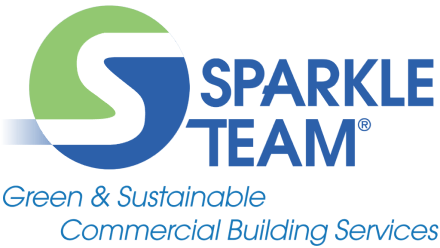Breathing Easier with Indoor Air Quality-Conscious Cleaning
Boost your facility’s indoor air quality with a thoughtful cleaning program

No one likes a stuffy office. But stale-smelling air causes more than mere discomfort. Poor indoor air quality majorly impacts occupants’ respiratory health, compounded by rising rates of asthma and allergies. (The CDC reports over one quarter of American adults have seasonal allergies). But managing indoor air quality means more than increasing area purifiers and improving ventilation. Cleaning plays a vital role in air maintenance, boosting other efforts to create a safe place to work and collaborate. In honor of Indoor Air Quality Awareness Month, we break down how the right methods actively improve air conditions in your facility.
Deep clean unexpected dust collectors
Occupants may only notice dust at eye level. But the real common reservoirs of dust lie above and below: carpeted floors and acoustic tile ceilings. Their textured surfaces make them popular in offices for their ability to absorb noise. Yet this same quality also makes them a magnet for a variety of allergens and airborne particles. Both should be cleaned regularly by vacuums equipped with HEPA filters. HEPA filters can capture 99.97% of dust, pollen, mold, bacteria, and other airborne particles with a size of 0.3 microns.
Reduce VOCs and go green
Regular and rigorous cleaning remains crucial for maintaining indoor air quality. Yet third party-certified green cleaning products enjoy an added advantage. Many conventional cleaning solutions actually introduce indoor air pollutants like formaldehyde, benzene, and other carcinogenic VOCs (volatile organic compounds). On the other hand, certified green cleaning products provide the same level of effectiveness with low or near-zero VOC exposure. A new study highlights this marked difference, finding that non-scented green products release nearly eight times fewer VOCs than scented conventional products.
Use the right tools
Choosing the right cleaning tools also affects indoor air quality as well. Some methods can actually stir up and circulate harmful particles. The best cleaning equipment therefore needs to both remove and trap pollutants, like the aforementioned HEPA vacuums. Dust mops and cloths made with microfiber can also remove particles without releasing them back into the air.




